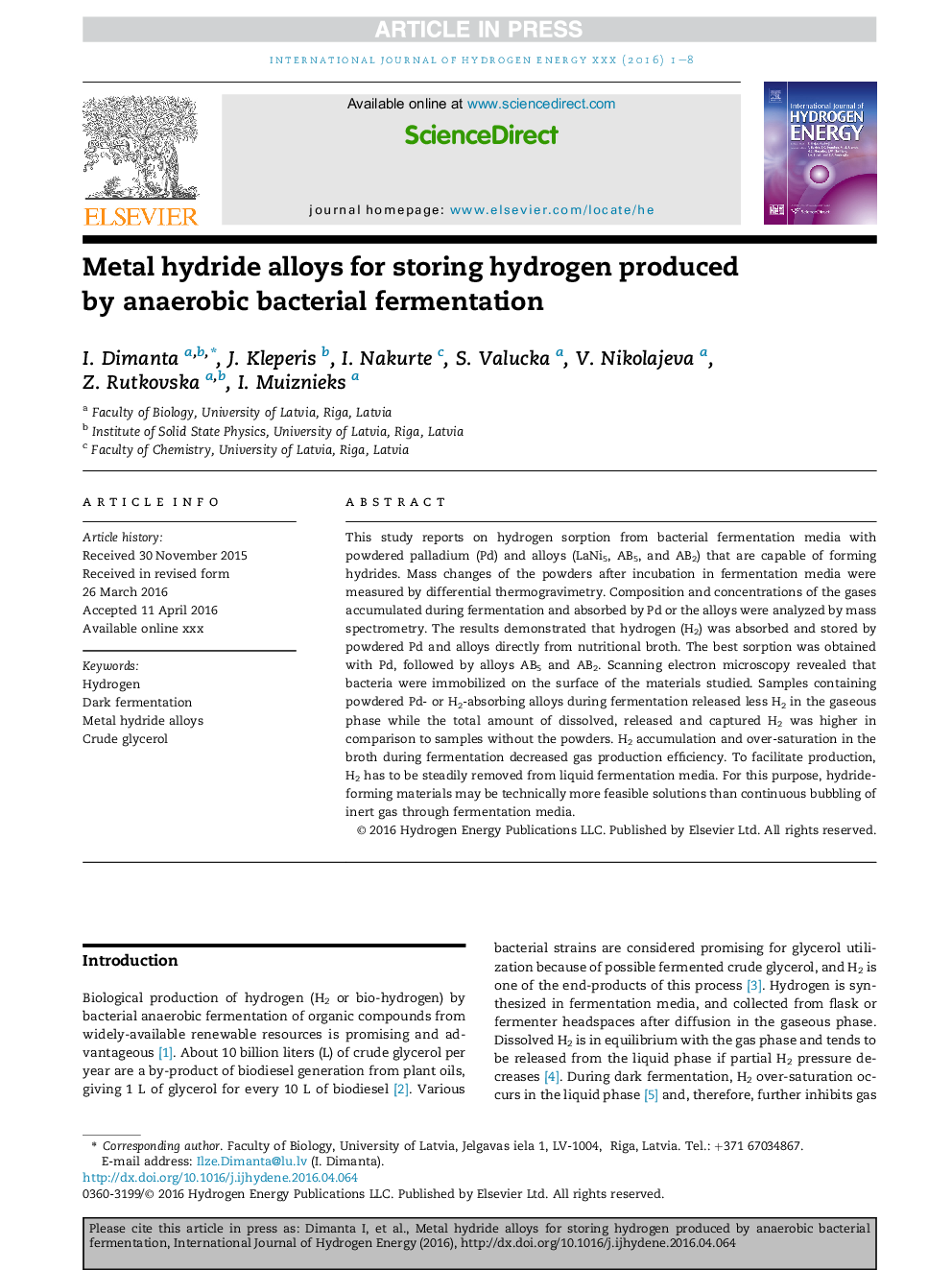| Article ID | Journal | Published Year | Pages | File Type |
|---|---|---|---|---|
| 7710456 | International Journal of Hydrogen Energy | 2016 | 8 Pages |
Abstract
This study reports on hydrogen sorption from bacterial fermentation media with powdered palladium (Pd) and alloys (LaNi5, AB5, and AB2) that are capable of forming hydrides. Mass changes of the powders after incubation in fermentation media were measured by differential thermogravimetry. Composition and concentrations of the gases accumulated during fermentation and absorbed by Pd or the alloys were analyzed by mass spectrometry. The results demonstrated that hydrogen (H2) was absorbed and stored by powdered Pd and alloys directly from nutritional broth. The best sorption was obtained with Pd, followed by alloys AB5 and AB2. Scanning electron microscopy revealed that bacteria were immobilized on the surface of the materials studied. Samples containing powdered Pd- or H2-absorbing alloys during fermentation released less H2 in the gaseous phase while the total amount of dissolved, released and captured H2 was higher in comparison to samples without the powders. H2 accumulation and over-saturation in the broth during fermentation decreased gas production efficiency. To facilitate production, H2 has to be steadily removed from liquid fermentation media. For this purpose, hydride-forming materials may be technically more feasible solutions than continuous bubbling of inert gas through fermentation media.
Related Topics
Physical Sciences and Engineering
Chemistry
Electrochemistry
Authors
I. Dimanta, J. Kleperis, I. Nakurte, S. Valucka, V. Nikolajeva, Z. Rutkovska, I. Muiznieks,
